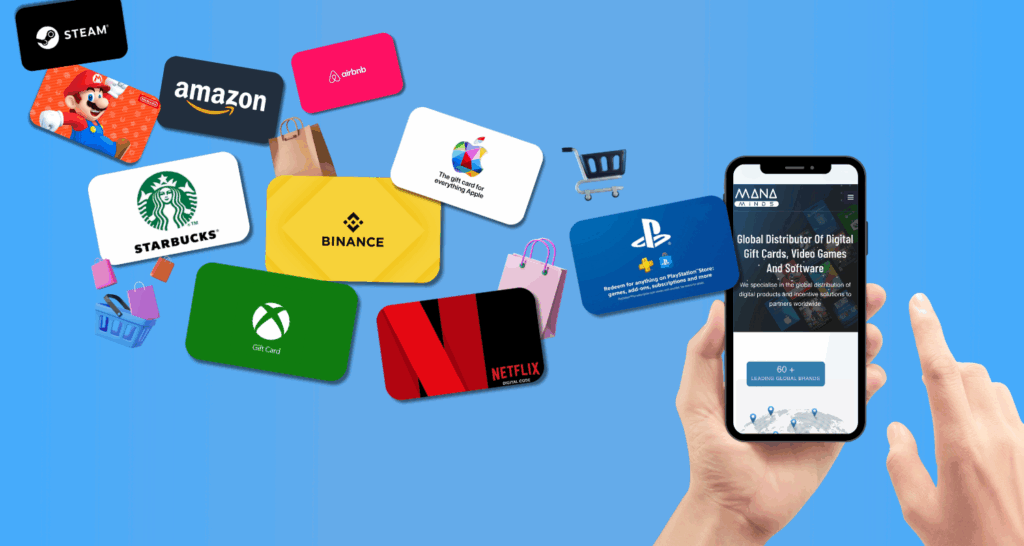
Gift cards and digital rewards are a typical part of buying in today’s era of electronic payments. They are widely used because of their adaptability, simplicity, and speed. Without a strategy, they are frequently neglected, resulting in unanticipated expenses or balances being forgotten. A lot of people consider these monies to be “bonus money.” This mindset fosters informal use and weakens the discipline of budgeting.
These technological instruments are easier to overlook than currency. Unless you have attempted to trace them, they do not show up on bank statements. This makes it challenging to monitor them as part of a more comprehensive financial management plan. What could begin as a positive benefit can easily turn into an inadvertent expense.
Smarter Gift Cards & Digital Rewards
To maximize the value of digital benefits, treat them just like regular money. Include them in your budgeting process with a purpose. Here are some practical ways to ensure you are organised, focused, and financially oriented:
- Log Every Reward Immediately
It’s the first thing to do is to have visibility. Each time you get an electronic reward or card, record it in your budget tracker. This process transforms an intangible asset into a tangible resource. It’s an integral part of your overall financial plan, and not only a bonus.
- Assign Each Reward a Purpose
The money that is not allocated tends to vanish. Each reward should be assigned to a particular spending category. For instance, if you get a $30 credit card, choose whether to use it for entertainment, groceries, or personal health care. The purpose of the card can be tied to a goal, which increases the control. This ensures that digital rewards are geared towards your needs instead of allowing you to make decisions on your own.
- Bundle Small Balances
Small amounts are often left unclaimed. To prevent waste, put remaining balances together. Consider them to be one money and assign a function to the sum. For example, the four cards that have five dollars each can be used to create an entire budget of $20 to cover a particular expense. This reduces confusion and allows for spending to be planned.
- Use Rewards to Offset Fixed Expenses
Instead of using rewards to pay for additional items, use them towards the regular expenses. If you normally have a set amount of money allocated to specific items, allow the reward to lower your out-of-pocket expenses out of pocket. This is a way to reinforce the importance of budgeting smartly. The rewards don’t alter your spending habits, but they reduce the financial burden you already have.
- Avoid Spending Above the Reward Amount
Discipline matters. If the reward amount is $25, avoid spending more to earn it. The card should serve you by staying within the limits of its use. This safeguards your overall budget and stops reward-triggered overspending. If you need to spend more than the amount you have set, be prepared to account for the difference ahead of time and make sure it is in line with your monthly objectives.
- Track Usage and Value Gained
When you redeem rewards, record the transaction. Note the amount spent as well as the amount saved, and in what category it was for. This will create an accountability loop. It also allows you to see the way digital rewards contribute to your financial well-being in the long run.
- Incorporate Rewards Into Monthly Reviews
Each month, you should review all your digital rewards. Examine which rewards were used, what is left, and whether they require any attention. Regularly reviewing your digital asset is fresh in your head. Additionally, it allows you to move any reward that is not being used for future requirements.
- Stay Organized With a Central List
Keep a single list of spreadsheet to keep track of all your digital devices. Make sure it is up-to-date and easily accessible. Avoid multiple storage locations (e.g., papers, slips of paper, apps, emails). One source of truth will prevent any oversight and confusion.
- Use Rewards to Support Financial Goals
Every penny saved via digital rewards could be used to fund another. Put that money towards an objective: an emergency savings fund, debt repayment, or a purchase planned. If rewards are used for a reason that goes beyond the immediate need, and help strengthen your financial standing overall. These small shifts can add up over time.
- Resist the “Use It or Lose It” Trap
If a reward isn’t easy to spend wisely, do not rush to spend it. Instead, take time to think about it and make a plan. There may be an alternative later, or leave it in place to avoid unnecessary expenditure. There is no need for every value to be accounted for if it’s at a greater price. The objective is intelligent usage, not forced.
Final Thoughts
Gift cards and digital rewards provide real value in terms of financial value. However, only if you utilize them in a way that is purposeful. Without organization, they become useless. When they are disciplined, they can transform into powerful budgeting tools.
By keeping track of, logging, as well as assigning goals and re-evaluating your strategy frequently, you can ensure that every digital dollar is contributing to your financial understanding. The most effective reward strategies don’t depend on luck. They’re based on careful budgeting, prudent spending, and active involvement with your finances.
If digital rewards are treated as genuine money, then they can work for you and not against you. Get started and plan your next purchase using the help of an Amazon gift card. It’s an easy method to test your plan to see it in action and help you build momentum for more efficient digital spending.







